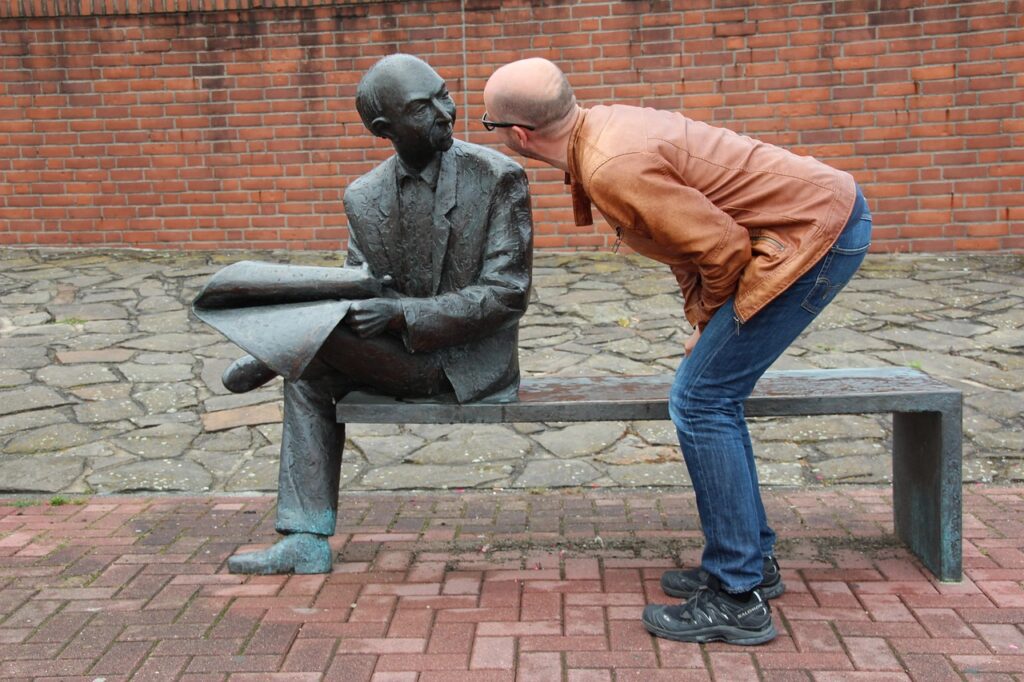Your 5-Point Guide to Better Dialogue
I don’t read a ton of fiction these days — I’ve been leaning into more nonfiction, simply because it helps me learn and reassures me that others are diving intelligently into all sorts of topics. But when I do, the way a writer uses dialogue can make or break the experience for me.

As with most elements of writing, there’s not really a “right” way to do dialogue. But as I explain in this video, if you combine dialogue with the goal of showing rather than telling, you’ll likely create a more satisfying and engaging sequence for your readers.
The guidelines:
- Use a full range of verbs to describe the communication (e.g., shouted, exclaimed, whispered, lamented).
- Let action and analogy replace your dialogue verbs where it makes sense to help readers visualize the scene and enter the character’s inner world.
- Trust readers to come along with you through the sequence. Unless the scene has a lot of characters, they can use line breaks and even the dialogue content itself to understand who is speaking.
- Understand when silence matters. If a character responds to another by saying nothing, that’s valid and speaks volumes.
- Think less about writing and more about real life. Go listen to people have real conversations. Analyze the back and forth that happens and write the way people actually talk.
Got questions about your own dialogue? Pop your question down below and I’ll answer it the best I can!
[Transcript summary]
As fiction writers, one of the things that we can struggle the most with is dialog. And that’s not a great thing if you consider that most agents and professionals recommend that your dialog should account for almost 20% or so of your book. So, the question is, how do you actually make it good?
In general, what’s really gonna be helpful for your dialog is to make sure that it still has to do the job of “show, don’t tell.” Most writers, what they run into is that they associate “show, don’t tell” with just the narration. And then they forget about it in the dialog. But your dialog can show rather than tell, too. So, keep that in mind. That’s your anchor point.
The first practical tip to improve your dialog is, use a range of verbs. I cannot tell you how many books I have read where it’s like, ‘So-and-so said,” next line, “So-and-so said.” Same repetition, over and over. Again, showing, not telling, you can use a huge range. Maybe they are shouting. Maybe they are explaining, whispering. All those kinds of verbs are fair game. Use ’em.
This second tip is to let analogy and action take the place of a traditional, simple tag. So, for example, instead of saying something like, “she said,” you might actually say, “She threw her coat on the table,” because doing that allows the reader to see, and you’re taking them along with the action as that dialog is taking place. So, you don’t necessarily have to break into a full narration. You can just use that little snippet, one sentence after what they’ve said, to link it together.
Third, remember, sometimes, you don’t even need a dialog tag at all. Trust the reader to come along with you and understand. If there’s a line break, it’s probably a different character speaking. There’s a lot of ways that they can instinctively understand what you’re getting at, especially if you’re describing the scene with those analogies and actions.
This fourth thing is something that a lot of writers miss, and it’s silence. We often think of dialog as just the words that are being said, but silence is a valid part of conversation. It has weight. It has connotation, so — but when you insert that into your scene, that has meaning, and the reader is gonna follow that. So, don’t be afraid to use that when you can.
This last thing, most writers, they put so much effort into their dialog, and that’s exactly why it doesn’t work. When you put that much effort into it, it does sound forced. So, what you have to realize is you need to think less about the writing and more about real life. What do people actually sound like in conversation? The way that we write is very often not the way that we talk. So, if you’re having problems with dialog, go out and listen, go and eavesdrop, record some conversations. You know, real subtle. You know, you’re not trying to get into anybody’s privacy or anything, but you’re just trying to analyze what they’re saying and how they’re saying it. And you’ll find that the flow of things is very different. The word choices are even different, whether you use contractions or not. All those little things matter, so just ease it up.
So, to just kind of wrap up, just remember that when you are creating dialog, you want to be true to how people actually talk. But you also want to think about your characters and be authentic to them. If you can get those things while you also show what’s going on rather than telling, you’ll be in great shape.